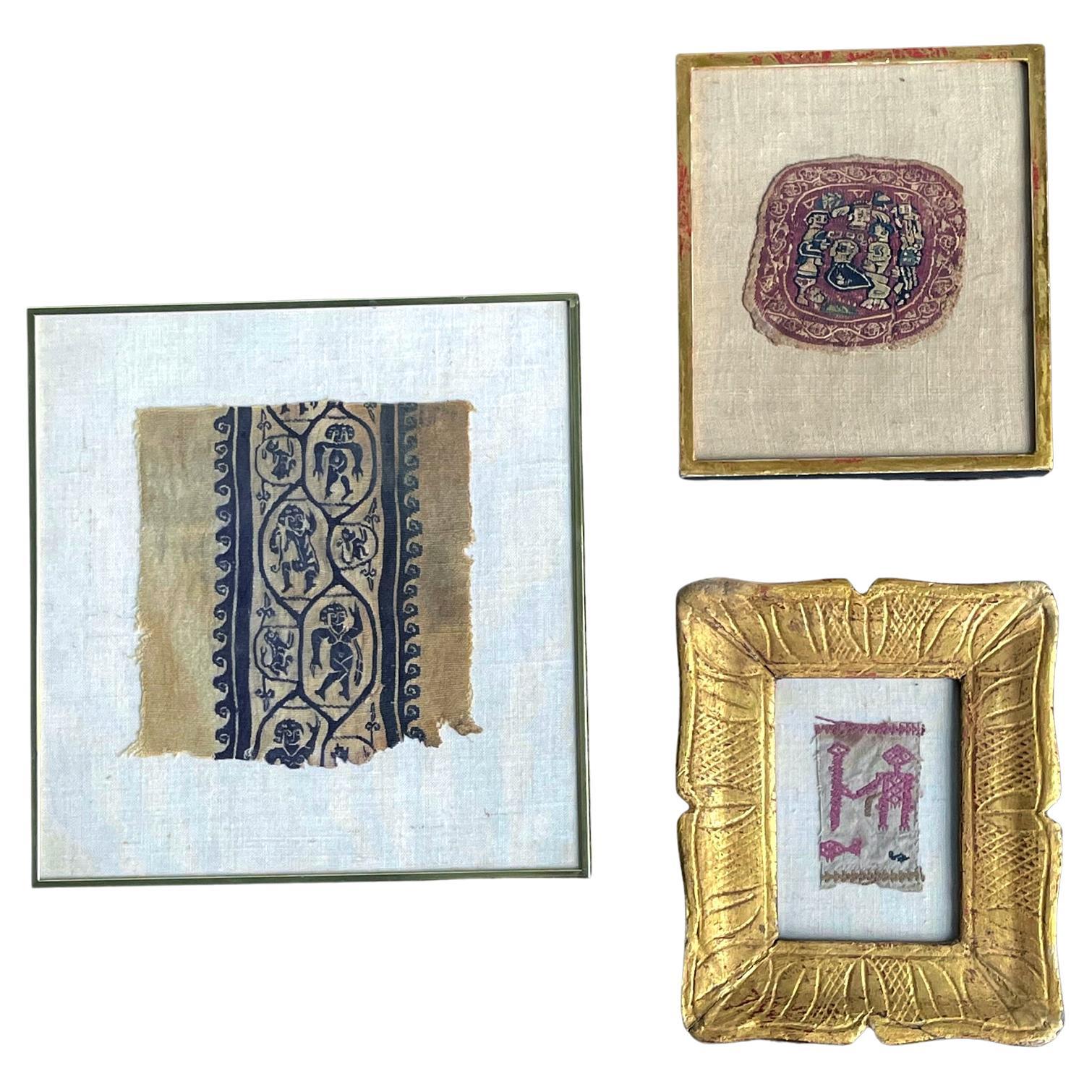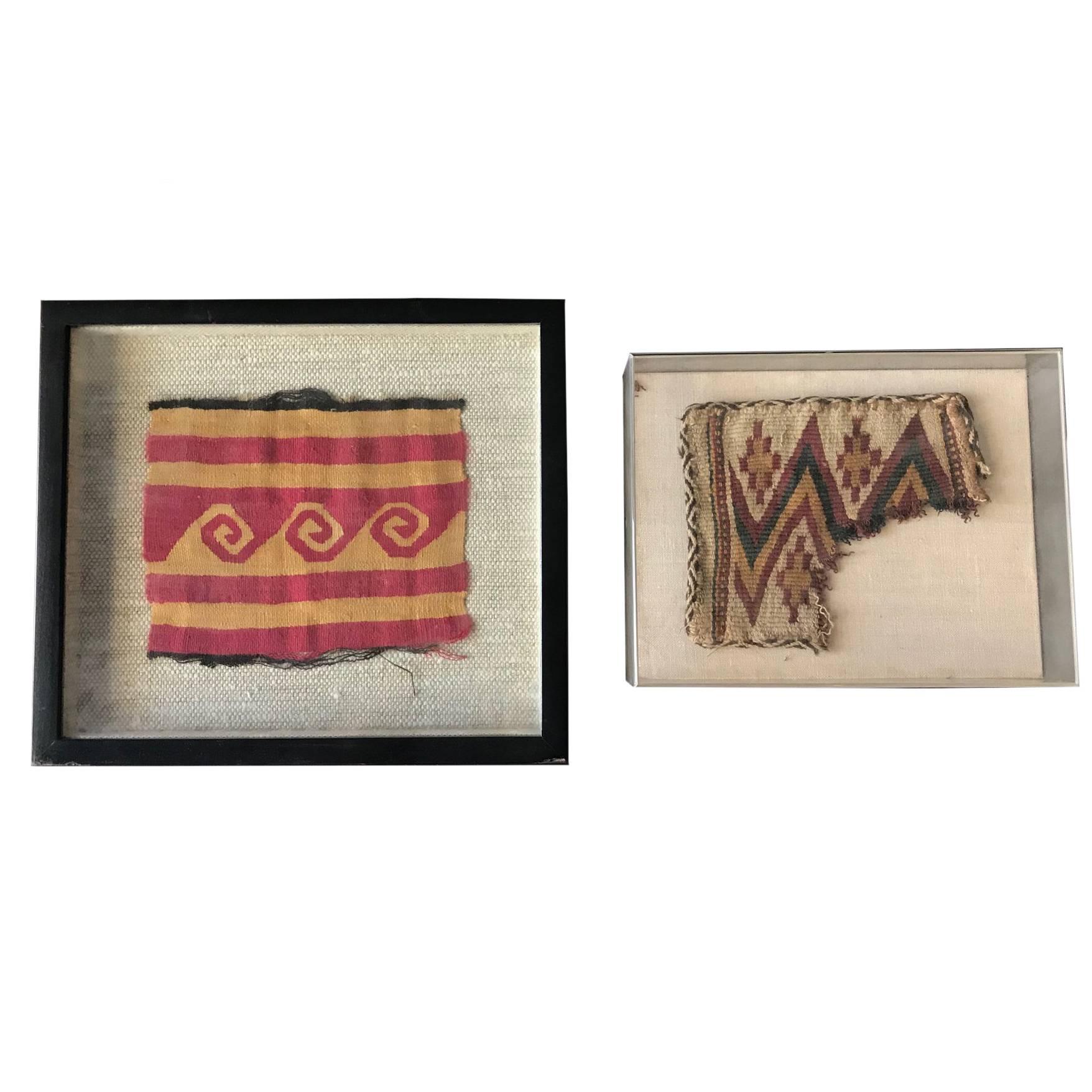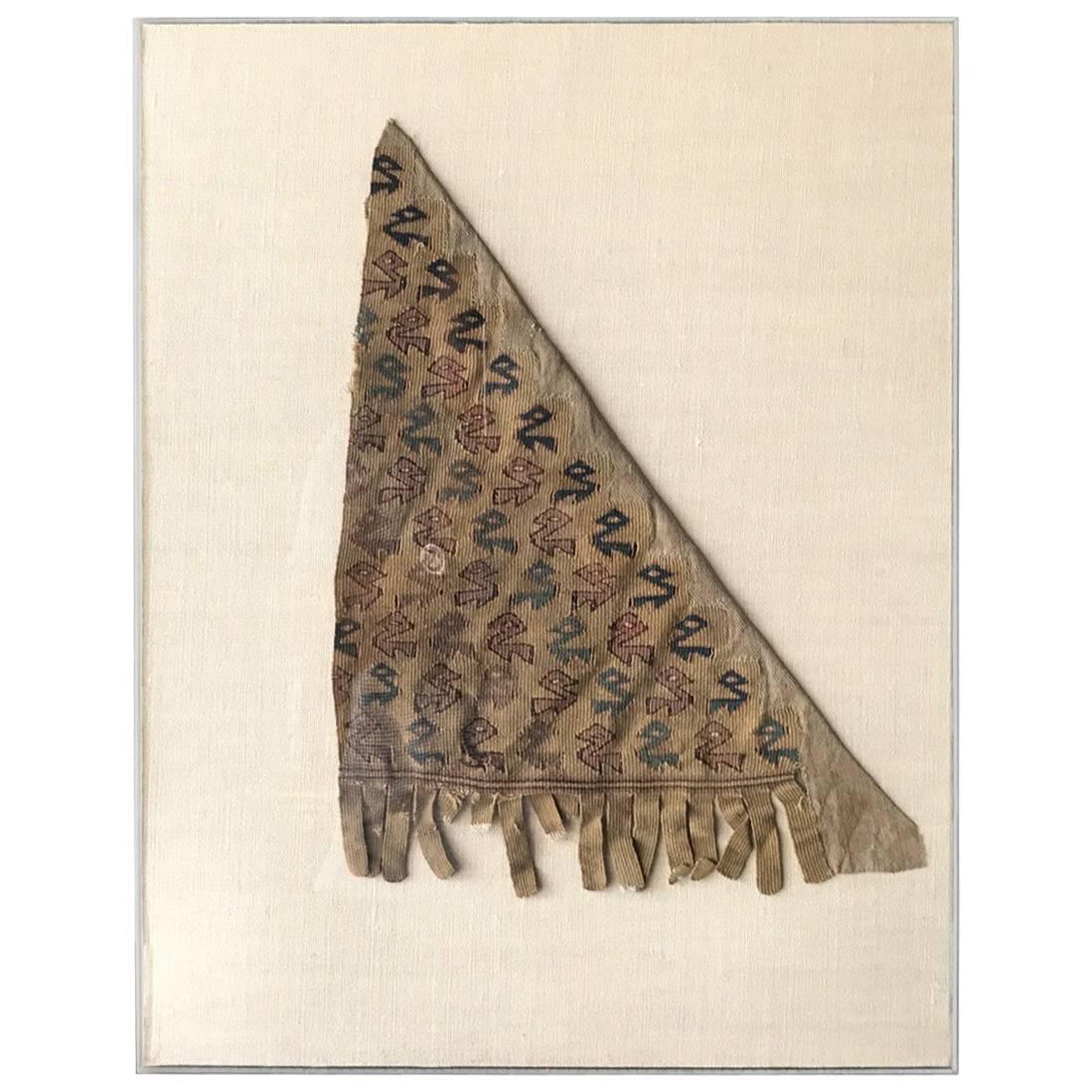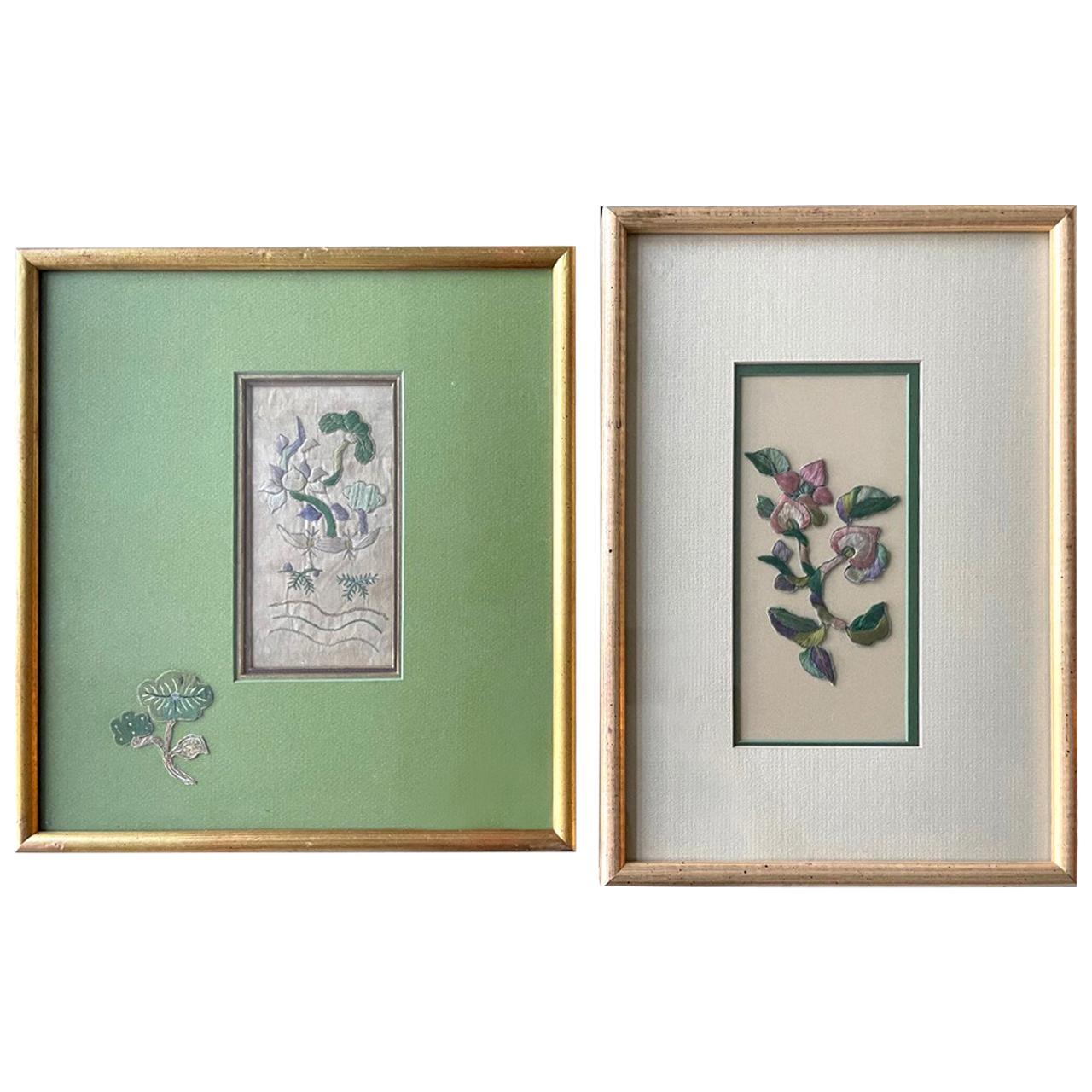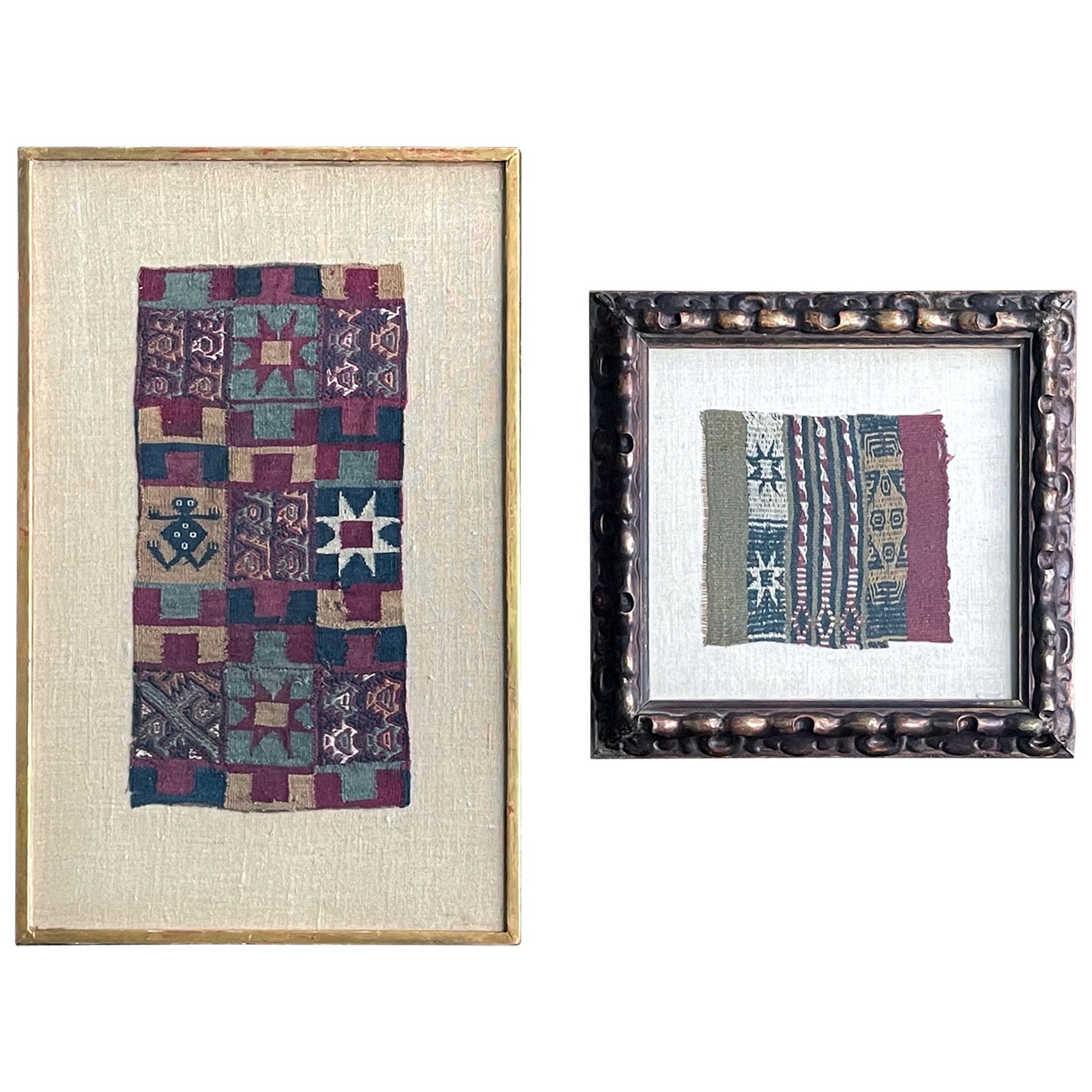Items Similar to Framed Hmong Appliqué Textile Fragment
Want more images or videos?
Request additional images or videos from the seller
1 of 5
Framed Hmong Appliqué Textile Fragment
About the Item
Dating to the mid-20th century, this colorful Hmong textile is a classic example of the appliqué technique used for the traditional cloth known as paj ntaub. Appliqué is the process by which patches of fabric are sewn onto a different piece of fabric to form a new pattern.
Paj ntaub is an integral part of Hmong culture and fashion, in particular a source of great pride to Hmong women. The brightly colored embellishments, often on darker fabric, were a staple for clothing used in traditional celebrations including marriages, births, holidays and other important events. Through periods of persecution, Hmong women began preserving their language through imagery, stitching secret messages onto their clothes as they migrated from village to village. The paj ntaub quickly became a way to hold onto the identity and culture of the Hmong people, even going so far as evolving into story clothes depicting scenes, events, and narratives from their oral history.
This framed paj ntaub fragment is comprised of intricate appliqué patterns enclosed by a black border with white and pink stars (hnub qub). At the center of the textile are four squares with various ancient Hmong symbols. Each has a central coil (lub qwj yees) symbolizing family growth and interrelatedness. Surrounding the spiral are eight snails (qab qwj) which represent the union of two families and can also symbolize the spinning motion used in many spiritual chants. Lining each square is a step motif (theem ntaiv), which can be interpreted to represent the nomad lifestyle of the Hmong people. Lastly, there is a border with a repeating triangle pattern surrounding all four squares representing mountains (rooj), believed to embody strength. While some of the traditional meaning of paj ntaub imagery has been lost with various interpretations, the art remains alive, preserving connections with a lost homeland.
From the collection of Frances and Gary Comer.
- Dimensions:Height: 18.5 in (46.99 cm)Width: 34.5 in (87.63 cm)Depth: 1.5 in (3.81 cm)
- Style:Folk Art (In the Style Of)
- Materials and Techniques:Fabric,Appliqué
- Place of Origin:
- Period:
- Date of Manufacture:20th Century
- Condition:Wear consistent with age and use. Minor fading.
- Seller Location:Chicago, IL
- Reference Number:

About the Seller
4.9
PAGODA RED is a renowned resource for designers as well as collectors of contemporary and ancient Chinese, Korean and Japanese art. They offer a curated edit of fine and provincial furniture, ceramics, scholars' objects, and paintings and textiles, each piece historically and geographically authentic.
Diamond Seller
These expertly vetted sellers are 1stDibs' most experienced sellers and are rated highest by our customers.
Established in 1997
1stDibs seller since 2006
1,417 sales on 1stDibs
Typical response time: 1 hour
- ShippingRetrieving quote...Ships From: Chicago, IL
- Return PolicyA return for this item may be initiated within 2 days of delivery.
More From This SellerView All
- Vintage Japanese Indigo Folk Kamon TextileLocated in Chicago, ILDating to the mid-20th century, this vintage Japanese textile is a folk example of traditional stencil dyed fabric, known as katazome. Richly...Category
Mid-20th Century Japanese Textiles
MaterialsCotton
- Vintage Japanese Indigo Folk Kamon TextileLocated in Chicago, ILDating to the mid-20th century, this vintage Japanese textile is a folk example of traditional stencil dyed fabric, known as katazome. Richly...Category
Mid-20th Century Japanese Textiles
MaterialsCotton
- Pair of Framed Chinese Silk Brocade Chair Panels, c. 1850Located in Chicago, ILThese framed silk brocade tapestries are two halves of a magnificent Qing-dynasty chair panel, or chair strip. Because traditional Chinese seating was n...Category
Antique Mid-19th Century Chinese Qing Textiles
MaterialsSilk
- 19th Century Tibetan Thangka of ChenresiLocated in Chicago, ILThangkas are devotional paintings displayed by Buddhists in monasteries, temples, and even in their homes. The rich red, orange, green, and blue hues are still incredibly vibrant on ...Category
Antique Early 19th Century Tibetan Tibetan Paintings and Screens
MaterialsBrass
- Tibetan Thangka of Sakyamuni with Silk Brocade, C. 1880Located in Chicago, ILHistorically in Buddhist Tibet, patrons and monks commissioned thangka art, or sacred painting, to focus their meditations and prayers. This 19th-century Tibetan Thangka, painted in rich red, green, and blue pigments, still maintains incredible vibrancy. The central figure is the Sakyamuni Buddha, seated in the diamond position with alms bowl...Category
Antique Late 19th Century Tibetan Tibetan Paintings and Screens
MaterialsLinen, Silk
- 19th Century Chinese Embroidered Silk Ladies Butterfly Short RobeLocated in Chicago, ILWhen the Qing-dynasty woman who wore this lovely jacket entered a room, people would instantly have recognized her status and rank based on the materials and decoration of her garmen...Category
Antique Mid-19th Century Chinese Qing Textiles
MaterialsSilk
You May Also Like
- Three Framed Textile Fragments Continental EuropeLocated in Atlanta, GAA collection of three antique textile fragments displayed in various frames. It consists of a blue on white woven panel presented in a metal frame. The panel depicts dancing human fi...Category
Antique 19th Century European Archaistic Tapestries
MaterialsTextile, Wood
- Two Framed Pre-Columbian Textile Fragments Nazca CultureLocated in Atlanta, GATwo small fragments of pre-Columbian textiles in shadow box frames. Both have strong geometrical patterns in the style of Nazca culture, located in the southern coast of nowadays Per...Category
Antique 15th Century and Earlier South American Pre-Columbian Tapestries
MaterialsWool
- Framed Pre-Columbian Textile Fragment from Chancay CultureLocated in Atlanta, GAAn antique pre-Columbia textile fragment likely from Peru Chancay culture in Central coast that thrived in the late Intermediate period/ late Horizon, A.D. 1200-1550. Abstract geomet...Category
Antique 15th Century and Earlier Peruvian Pre-Columbian Quilts and Blankets
MaterialsTextile, Acrylic
- Ceremonial Cape Textile Art from Hmong Miao PeopleLocated in Atlanta, GAAn oversized and impressive cape worn during ceremonial dancing by Miao people (also known as Hmong in English) from Guizhou Province, China circa 1940s-1950s in a rarely intact and well-preserved condition. Miao people are diverse minority groups living in Southern China as well as Southeast Asia with complex sub-affiliations based on attires, languages, cultural customs and art tradition. They are renowned for their textile and silver craftsmanship as well as singing and dancing traditions. This cape, rather heavy in construction and striking in bold red and black, was made from wool, hemp and cotton. The surface showcases elongated diamond patterns in complementary woven wool and couched plaque on top of the cotton part. The pattern strikes the viewer with a strong sense of dignity and power. The heavy material and pattern are strangely akin to some of the Navajo weaving. The cape is in a form a jacket with long and wide sleeves, and it was meant to be used in ceremonial occasions. Our research reveals that the piece was from the Northwest Guizhou in an autonomous county called Weining. The area is of subtropical highland and the generally cold weather was reflected in the heavy materials used in this piece, in comparison with other textiles made in the warmer lowland. There is an older paper label with price tag in Chinese inside the cape. It was purchased in Guizhou decades ago by a US collection in MA. With a span of over 94 inches long, it makes a very impressive textile art piece for wall hanging. Not framed and easily shipping folded up. For a similar jacket from Weining, see "Miao Textile...Category
Mid-20th Century Chinese Tribal Textiles
MaterialsTextile
- Two Framed Chinese Antique Textile Fragments Qing Dynasty ProvenanceLocated in Atlanta, GAA group of two antique textile fragments from China, circa 19th century Qing dynasty, professionally preserved and displayed in giltwood frame...Category
Antique Mid-19th Century Chinese Chinese Export Textiles
MaterialsSilk, Wood
- Two Framed Pre-Columbian Textile Fragments Inca Culture PeruLocated in Atlanta, GATwo pre-Columbian textile fragments presented in wood frames. Handwoven in colored yarn, possibly camelid fibers, these pieces were from Inca period circa 15-16th century. One panel is a classic Inca weave that was likely part of a mantle or cape. It has a multi-panel design with eight-point stars alternating with stylized animal and homomorphic figures, steps-design and abstract scrolling patterns. The second one features a multiple stripe design also with eight-point star and a mysterious figure sandwiched between stripes of geometrical patterns and plain borders. Presenting in a thin gilt wood and a carved dark wood frame...Category
Antique 15th Century and Earlier Peruvian Pre-Columbian Tapestries
MaterialsTextile, Wood
Recently Viewed
View AllMore Ways To Browse
Crown Quilt Pattern
Vintage Postage Stamp Quilt
Broderie Antique
Tumbling Blocks Quilt
Candlewick Antique
Cigar Silk Art
Amish Basket
Amish Box
Amish Doll Quilt
Antique Flying Geese Quilt
Delectable Mountains
Floral Appliques
Antique Fan Quilt
Antique Hexagon Quilt
Antique Hexagon Quilts
Antique Lone Star
Pineapple Quilt
Tobacco Quilt
